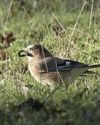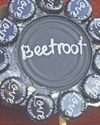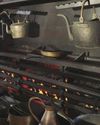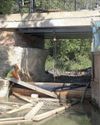There’s more to the average duck than meets the eye, as Pip Webster reveals.

The number of ducks to be seen on our waterways increases dramatically with the arrival of winter migrants.
They are divided by their feeding behaviour into either ‘dabbling’ or ‘diving’ ducks, and modern molecular analysis has shown that these sub-divisions are quite distinct, convergent evolution producing the ‘duck’ appearance in two different groups of waterfowl.
Mallards, our most common British duck, are dabbling ducks – shallow water birds that feed primarily along the surface or by tipping headfirst into the water. The inside of their beaks have tiny rows of plates (lamellae) through which they can filter the water, trapping food – you have probably noticed the roughness of a mallard’s beak if you have been nipped by one when it takes bread from your fingers.
Dabbling ducks are typically omnivorous, eating plant matter, insects and worms. They dive infrequently – often just to avoid predators – and are equally happy grazing on the land. They tend to have flat, broad beaks and float high on the water with their tail held clear while swimming. When taking flight they spring into the air rather than pattering across the water.
Esta historia es de la edición November 2017 de Canal Boat.
Comience su prueba gratuita de Magzter GOLD de 7 días para acceder a miles de historias premium seleccionadas y a más de 9,000 revistas y periódicos.
Ya eres suscriptor ? Conectar
Esta historia es de la edición November 2017 de Canal Boat.
Comience su prueba gratuita de Magzter GOLD de 7 días para acceder a miles de historias premium seleccionadas y a más de 9,000 revistas y periódicos.
Ya eres suscriptor? Conectar

HIGH AND MIGHTY
Acorns make the perfect store food for jays’ larders

TAKING THE PLUNGE
Why Chris and Sarah Atkin will never forget tying the knot

LABELLED WITH LOVE
Helen Tidy enjoyed one weekend moored next to The Beer Boat ... simply the perfect solution to collecting bottle tops for her next project

MIDDLE THAMES
In the second part of our guide, we follow the Thames upstream from Reading through the steep sided Goring Gap and quieter countryide to reach Oxford

THE GOOD OLD DAYS
Robert Davies recalls childhood memories of a popular holiday destination and uncovers a reminder of the golden age of canals

FIT FOR PURPOSE
Terry Hibbard from Harworth Heating offers his expert opinion following our feature on onboard stove safety

BUCKING UP...
We join Waterway Recovery Group’s first canal restoration working party in six months - as WRG’s volunteers help the Buckingham Canal Society get the project back on track after lockdown

ART ON THE WATER
Graphic artist Katie Ruby lives and works on 32ft narrowboat Poppy
GO WITH THE FLOW
What makes a boat truly stand out from the crowd? Sometimes you just need a little finesse and a taste for adventure
A GLASS HALF-FULL AT BUCKBY WHARF
Tim Coghlan raised a glass on the Grand Union Canal as The New Inn reopened to the relief of regulars